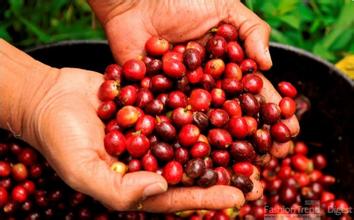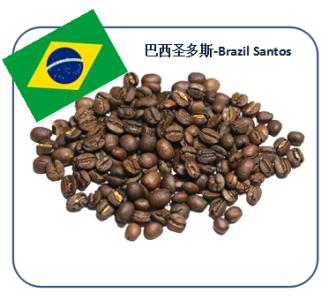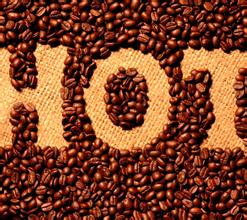How big is a cappuccino coffee cup?-the difference between an Italian coffee cup and a single product
How big is a cappuccino coffee cup?-the difference between an Italian coffee cup and a single product
Both drinks are made from coffee and milk, but cappuccino has a more knowledgeable origin and has always been the best material for the study of character changes in Europe and the United States.
The history of the word Cappuccino:
Founded five years later in 1525, the monks of the St. Franciscan Church (Capuchin) all wore brown robes and pointed hats. When the St. Franciscan Church spread to Italy, the locals thought the monks' clothes were very special, so they gave them the name Cappuccino. The Italian word refers to the loose robes and small pointed hats worn by monks, derived from the Italian word "headscarf" or Cappuccio.
However, Old Yi loved coffee and found that when espresso, milk and milk foam were mixed, the color was like the dark brown robe worn by monks, so he came up with a drink with coffee and sharp milk bubbles, which was named Cappuccino. The word was first used in English in 1948, when a report in San Francisco first introduced cappuccino beverages, and it was not until 1990 that it became a familiar coffee drink. It should be possible to say that the word Cappuccino coffee comes from the St. Franciscan Church (Capuchin) and the Italian headscarf (Cappucio). It is believed that the original word makers of Cappuccino never dreamed that the monks' robes would eventually become the name of a coffee drink.
Cappuccino is also related to the name of a monkey. There is a small monkey in Africa with a black cone-shaped hair on its head, much like a pointed hat on a St. Franciscan robe, hence the name Capuchin, which was first used by the British in 1785. The word Capuchin has generated coffee drink names and monkey names hundreds of years later, which has always been an interesting story for literati.
a. Espresso is a 1 ounce (30ml ±5ml) drink made from ground coffee powder and must be extracted from a two-headed hand.
b. Coffee beans are products that are processed and roasted from the fruits of various coffee trees.
c. Coffee beans can not have any additives, flavors, dyes, spices, fragrances, liquids, powders and so on. But at any time from when coffee beans are picked (like cherries) to extracted into drinks, cultivation during material growth, and primary processing (such as fertilizers, etc.) are allowed.
d. Coffee beans can be blended, individual, from a country or a manor, and so on.
e. All sensory judges must have a full espresso, and if the presented drink fails to comply with the definition of espresso, the taste and sensory scores will be reflected by the sensory judges. Making espresso can prepare a large number of different kinds of coffee beans.
f. The brewing temperature of espresso should be controlled between 90.5-96 degrees Celsius (195-205 degrees Fahrenheit).
g. The brewing pressure of the Italian coffee machine should be set between 8.5 and 9.5 atmospheres.
h. The extraction time difference between two espresso (2 cups and one serving) must be within 3 seconds, otherwise the "extraction time" item will be given "No". Extraction time is recommended between 20 and 30 seconds, but not mandatory

Important Notice :
前街咖啡 FrontStreet Coffee has moved to new addredd:
FrontStreet Coffee Address: 315,Donghua East Road,GuangZhou
Tel:020 38364473
- Prev

When do you put sugar in espresso? how to make it?
When to put sugar in espresso how to make brown sugar is generally thicker than white granulated sugar, will slow dissolution affect the taste of coffee? The roughness of brown sugar commonly used in the market has little effect on the taste of coffee. In fact, in addition to granulated sugar and brown sugar, you can also try to find out the difference in the taste of coffee with honey, maple sugar and black sugar. Even supermarkets sell all kinds of blended coffee sugar. Regular coffee
- Next

Introduction to flavor description and taste treatment of coffee beans distinguished by Robusta and Arabica
Taste description of coffee beans distinguishing between Robsta and Arabica Arabica coffee beans are synonymous with Arabica. Arabica Enterprise claim Open Classification: coffee plant biology Natural Rubiaceae Arabica, (scientific name Coffea arabica, English Coffee Arabica), can also be called Arabica coffee, is Ethiopia (Ethiopia
Related
- Beginners will see the "Coffee pull flower" guide!
- What is the difference between ice blog purified milk and ordinary milk coffee?
- Why is the Philippines the largest producer of crops in Liberia?
- For coffee extraction, should the fine powder be retained?
- How does extracted espresso fill pressed powder? How much strength does it take to press the powder?
- How to make jasmine cold extract coffee? Is the jasmine + latte good?
- Will this little toy really make the coffee taste better? How does Lily Drip affect coffee extraction?
- Will the action of slapping the filter cup also affect coffee extraction?
- What's the difference between powder-to-water ratio and powder-to-liquid ratio?
- What is the Ethiopian local species? What does it have to do with Heirloom native species?

